
Watchman Fellowship, Inc.
Subscribe to our email list and receive discounts and special offers from Watchman
New--Now Available

The Profile Notebook on CD-ROM $19.95!

Quick Links
Other Topics
Members of:
Profile Notebook
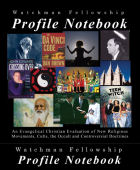 Only $39.95, this 312 page-plus binder includes over 75 Profiles. Also available as CD-ROM or Download!
Only $39.95, this 312 page-plus binder includes over 75 Profiles. Also available as CD-ROM or Download!
For more information on these topics, please visit the Apologetics or the Other Religious Movements sections of our web catalog; or click here to order a free information packet.
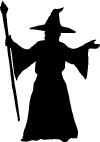
Tolkien, Fantasy, and Magic
By David Grubbs
At the writing of the article, the countdown registers twenty-three days—twenty-three days until the release of The Two Towers, the second installment of the Lord of the Rings film trilogy. For Tolkien fans eagerly anticipating the conclusion to their yearlong wait, this is good news. Not everyone is so thrilled, however. One individual in particular, a Canadian evangelist named Pat Cocking, has denounced the Lord of the Rings movies as an occult Trojan Horse sent to “beguile the church.” (http://www.charismanews.com/a.pl?ArticleID=6910) Others, while not so dogmatically opposed to Tolkien’s fiction as Cocking, may be uneasy about the fantastic elements of the books and movies, particularly their portrayal of magic. It is easy to see how this may raise questions, that certainly merit attention. Is the Lord of the Rings an occult decoy, as some may allege, or is there a more biblical message hidden beneath the magical trappings?
In this article, we will try to find answers to these . In order accomplish this task, we must take a closer look at what Tolkien actually wrote. This is, after all, the only honest approach. As C. S. Lewis declared, “Within a given story any object, person, or place is neither more nor less nor other than what that story effectively shows it to be.” (Hooper 430) Rather than forcing an outside definition of “magic” on Tolkien, we must see how he defines “magic” in his own work. Specifically, Tolkien’s works will be examined from two perspectives: the view from inside the stories and the view from outside the stories. “Inside” refers to the treatment of magic within the story itself—not as a plot device or symbol, but as a feature of an imaginary literary world. “Outside” refers to views the author expressed in a nonfiction context, which may be appropriately used as a means of understanding his fictional works. Finally, we will see how these “inside” and “outside” elements fit together in Tolkien’s “philosophy of fantasy.”
A LOOK INSIDE: MAGIC OR NOT?
Some Christians have tried to separate Tolkien from the debate over magic in fantasy. They claim that magic in Middle-earth, Tolkien’s fictional world, is really the miraculous supernatural powers of certain non-human beings, particularly elves and wizards (who are actually angels). This claim is well meant, but certainly inaccurate. Within Middle-earth, magic is not simply an ability of elves and wizards. In fact, members of all “races”—humans, elves, dwarves, and orcs—are said to have some magic, with the exception of hobbits. (Hobbit 53, 198; Fellowship 400; Towers 92) Even though hobbits have “little or no magic about them,” they do use magical objects. (Hobbit 16, 19, 91; Towers 430) It is probable that the hobbits’ lack of magic has more to do with desire than ability, for when one hobbit suggests to another that he become a wizard or a warrior, he responds tartly, “I don’t want to be neither!” (Fellowship 278) As for wizards, very few people in Middle-earth know that they are angels. Instead, most people think wizards are humans who have great magical powers because of their lifelong studies, an unlikely idea if humans are not magical. (Unfinished 405)
A LOOK INSIDE: WORD AS MAGIC
What then is the nature of magic in Middle-earth? Tolkien says little about this, but he does give us some hints. Tolkien never says explicitly what magic is; instead, he shows us how it works. However, by looking at the how, we can make a good guess at the what. When we compile the many instances of magic throughout the Middle-earth stories, we find one thing they all have in common: magic is made with words. These can be spoken words, like Gandalf’s “door-opening” spells at the Moria Gate, or written words, like the “door-sealing” inscription above the Moria Gates. (Fellowship 362, 398) Often, magic is made with sung words. This is the favorite method of elves, the most musical of Middle-earth’s peoples, and it seems to be the most powerful type of magic. (Silmarillion 171, 180-181; Fellowship 266) But in all cases, the common element is the use of words to, in some mysterious way, change or affect the world.
A LOOK INSIDE: WORD AS CREATION
But aren’t magic words and spells common in fantasy literature? Why is this important? It is important because it connects magic with the creation of Middle-earth. Though Tolkien did not want Middle-earth to be a Christian allegory like Pilgrim’s Progress, Middle-earth still reflects Tolkien’s faith. This is clearly seen in the creation story of Middle-earth, where Tolkien describes how God first makes angels, then the rest of the world. (Silmarillion 15) But instead of simply speaking Middle-earth into being, God uses a song—a symphony He composes and commands His angels to sing.
This idea of creation through music is ancient. It was central to the Pythagorean School of Greek philosophy, which taught that the universe was created and held in order by an underlying music called the “harmony of the spheres.” This belief about the “harmony of the spheres” was related in Greek philosophy to the idea of the Logos (the Word), the term later used by the apostle John to describe Christ in John 1:1. Ancient and medieval Christianity used the “harmony of the spheres” concept to describe how God, through Christ the Divine Word, created the world and keeps it running in a beautiful and orderly fashion. In fact, Christians today hear this idea in the hymn “This is My Father’s World” when they sing the words, “All nature sings, and round me rings the music of the spheres.” Tolkien, a scholar of history, was certainly aware of this prevalent idea. It is likely that Tolkien invented his Middle-earth creation story by combining the “harmony of the spheres” concept with such biblical passages as Job 38:6-7, which describes the angels singing as God began Earth’s creation:
Whereupon are the foundations thereof fastened?
Or who laid the corner stone thereof;
when the morning stars sang together,
and all the sons of God shouted for joy?
Middle-earth’s creation story may be interpreted as an expression of the biblical understanding of Christ as the Word. Just as Middle-earth is created and sustained through the words of God’s song, so the center of all of God’s creation is His Son Jesus Christ, the Divine Word, “by whom also he made the worlds; who being the brightness of his glory, and the express image of his person, [upholds] all things by the word of his power.” (Heb. 1:2-3)
A LOOK INSIDE: SPEAKERS AND SPOKEN
What does this say about magic? Simple: by putting the how of magic together with the how of creation, we learn what magic is. Middle-earth was created through the sung word, and a song lies at the heart of Middle-earth’s existence and history. But the peoples of Middle-earth are also singers and speakers. (Silmarillion 46, 91-92, 140) Because the Word/Song is the metaphysical basis of Middle-earth, the people of Middle-earth—as both speakers/singers and the spoken/sung—have a unique relationship to reality. Magic may be understood as an indication and result of this relationship, the action of a created being that is also creative in its own lesser and derivative fashion.
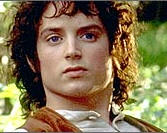
Left: Elijah Wood as hobbit Frodo Baggins in The Fellowship of the Ring (2001).
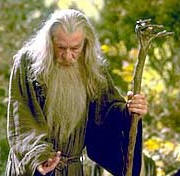
Right: Sir Ian McKellen as wizard Gandalf the Grey in The Fellowship of the Ring (2001).
A LOOK OUTSIDE: “ON FAIRY-STORIES”
After examining magic in Tolkien’s Middle-earth stories, we now move outside the stories to one of Tolkien’s non-fiction works, an essay entitled “On Fairy-Stories.” This essay is Tolkien’s definitive work on the nature and purpose of fantasy literature, and therefore central to this discussion. While it would be impossible even to summarize the entire essay within the short space of this article, we will look briefly at the most important points.
A LOOK OUTSIDE: WORD AS SUB-CREATION
Early in his essay on fairy-stories, Tolkien discusses the origin of the “fairy-story,” his term for fantasy literature. Tolkien rejects the popular secular theories of his day, and instead claims that fairy-stories are a natural product of language itself.
The incarnate mind, the tongue, and the tale are in our world coeval. . . . [H]ow powerful, how stimulating to the very faculty that produced it, was the invention of the adjective: no spell or incantation in Faërie is more potent. . . . The mind that thought of light, heavy, grey, yellow, still, swift, also conceived of magic that would make heavy things light and able to fly, turn grey lead into yellow gold, and the still rock into swift water. . . . [I]n such “fantasy,” as it is called, new form is made; Faërie begins; Man becomes a sub-creator. (Fairy-Stories 10)
In other words, Tolkien believes that language is a kind of “magic” because it can describe things that do not exist and perhaps never existed at all. When this “magic” is combined with the human imagination, what is produced is fantasy or Sub-creation. (Fairy-Stories 46-47) This term is actually one of three terms coined by Tolkien to describe what goes on in the writing and reading of fantasy: Sub-creation, Secondary World, and Secondary Belief. Sub-creation is an artistic act, usually literary, in which a person fashions a fictional setting in some way unlike the real world. This fictional setting, or Secondary World, may then be imaginatively entered by the reader. If the Secondary World is skillfully constructed, it will produce in the reader what Tolkien calls Secondary Belief. Secondary Belief is a sense of acceptance, of “rightness”—the feeling that, if the story were real, things would be just as they were described. It is difficult to bring about Secondary Belief even in realistic fiction, so the task is even more daunting in fantasy. As Tolkien wryly points out, anyone can write a book about a world with a green sun, but it takes skill to make it seem credible. (Fairy-Stories 48-49) For this reason, Tolkien considers fantasy to be “a higher form of art, indeed the most nearly pure form, and so (when achieved) the most potent.” (Fairy-Stories 47)
A LOOK OUTSIDE: THE MAKER’S IMAGE
Is this act of fantasy, of Sub-creation, a good thing? Isn’t it just an artistic form of lying, or evidence of delusion? Tolkien acknowledges this attitude, but rejects it. In his view, fantasy is not merely permissible but also praiseworthy. It is, in fact, part of what it means to be made in the image of God, and therefore one of the noblest abilities of humanity. Tolkien expresses this view powerfully and succinctly: “Fantasy remains a human right: we make in our measure and in our derivative mode, because we are made: and not only made, but made in the image and likeness of a Maker.” (Fairy-Stories 55)
Furthermore, Tolkien denies that fantasy indicates an inability to recognize reality. As he points out, stories of frog princes are based on the real difference between frogs and princes and the strangeness of placing the two together, not a failure to distinguish between frogs and princes. “If men were ever in a state in which they did not want to know or could not perceive truth (facts or evidence), then Fantasy would languish until they are cured . . . Fantasy will perish, and become Morbid Delusion.” (Fairy-Stories 54-55) A mind grounded in reality can, using imagination, produce fantasy. A mind that cannot distinguish between reality and imagination produces hallucinations and insanity.
Tolkien does acknowledge that fantasy may be misused, but does not see this as an argument against fantasy itself:
Fantasy can, of course, be carried to excess. It can be ill done. It can be put to evil uses. It may even delude the minds out of which it came. But of what human thing in the world is that not true? Men have conceived not only of elves, but they have imagined gods, and worshipped them . . . But they have made false gods out of other materials: their notions, their banners, their monies . . . Abusus non tollit usum [Latin: “Wrong use doesn’t preclude proper use”]. (Fairy-Stories 55)
For Tolkien, regardless of the inappropriate applications of the human gift of fantasy, fantasy remains a part of the image of God within humanity, and as such not merely legitimate but also laudatory.
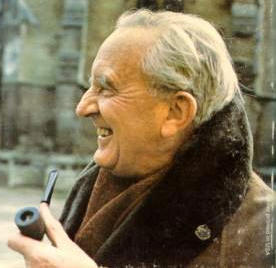
J. R. R. Tolkien (1892-1973)
INSIDE AND OUTSIDE: MAGIC AND FANTASY
Now that we’ve looked both inside and outside the stories, we must put the two perspectives together. When we do this, we discover that there is a significant parallel between the nature of magic within Middle-earth and Tolkien’s view of fantasy in the real world. A Speaker created Middle-earth and gave some of His creatures the gift of speech, and these created speakers use their power of speech to change Middle-earth through magic. A Speaker created our world and gave us the gift of speech, and we may use our power of speech to change our world through fantasy. Both magic and fantasy are rooted in the image of God.
This parallel reveals a playful streak in Tolkien. Throughout “On Fairy-Stories,” he describes fantasy as “magic,” comparing the human act of Sub-creation to the abilities of fairies in folklore. (Fairy-Stories 10, 52-53) Yet within his Middle-earth stories, magic appears to function as the sub-creative ability of a creature made in the image of its Creator, similar to fantasy in the real world. Fantasy is Magic, which is Fantasy, which is Magic—and Tolkien’s fiction and non-fiction each point back at the other as illustrations of themselves.
This theme demonstrates how truly amazing Tolkien finds the human gift of Sub-creation. For Tolkien, fantasy is not something to be dismissed with a yawn, but rather a miracle that inspires awe. It really is “magical” because it points away from the everyday world, and hints at mysteries outside our senses. When Sam the hobbit exuberantly declares, “I’d dearly love to see some Elf-magic, Mr. Frodo!” Tolkien is gleefully aware that it is he, the author, who is working the Elf-magic, and that we, the readers, are the ones who get to see the Elf-magic. (Fellowship 467) That we don’t notice this at the time simply reveals the power of Tolkien’s creative art.
ASKING THE WRONG QUESTION
In the end, “Can Christians accept Tolkien’s ‘magic’?” is the wrong question, because the magic of Middle-earth is only a small part of something larger and more profound. Tolkien wasn’t as fascinated by his wizards and enchanted rings as he was by the fact that he could show these wonders to his readers. For Tolkien, the fantasy is itself the magic and the marvel, and the fantasy points out from itself to the One Who makes it possible. Tolkien could not have made his hobbits if there had been no God Who made humans, and ultimately Tolkien’s hobbits are a kind of offering to God, the first fruits of a Christian imagination. Though the words are placed in the mouth of a fictional character, we cannot help but hear Tolkien echoing them, the prayer of a Sub-creator to his Creator:
[T]he making of things is in my heart from my own making by thee; and the child of little understanding that makes a play of the deeds of his father may do so without thought of mockery, but because he is the son of his father . . . As a child to his father, I offer to thee these things, the works of the hands which thou hast made. (Silmarillion 43)
Works Cited:
Hooper, Walter. C. S. Lewis: A Companion and Guide. HarperSanFrancisco, 1996.
Tolkien, J. R. R. “On Fairy-Stories.” The Tolkien Reader. New York: Ballantine Books, 1972. 3-73.
---. The Fellowship of the Ring. New York: Ballantine Books, 1978.
---. The Hobbit. New York: Ballantine Books, 1977.
---. The Silmarillion. New York: Ballantine Books, 1977
---. The Two Towers. New York: Ballantine Books, 1978.
---. Unfinished Tales. New York: Ballantine Books, 1992.
| The Races: Peoples of Middle-earth | The Faces: Characters of Middle-earth | The Places: Locations of Middle-earth |
|---|---|---|
| Humans: Like our world, the majority of Middle-earth’s population is human. | Bilbo Baggins: A hobbit who finds the Ring while on a quest for dragon treasure. | The Shire: Peaceful rustic land of hobbits. |
| Hobbits: Hobbits are humanlike people roughly half our height, with bare furry feet. | Frodo Baggins: A hobbit who is sent on a quest to destroy the Ring. Bilbo’s cousin. | Mordor: Wasteland kingdom of Sauron. The Ring must be destroyed here in Mt. Doom. |
| Elves: Elves are like humans, but more graceful and beautiful. Elves are the most magical race, and are immortal. | Gandalf the Grey: An old wizard who serves as guide to Bilbo and Frodo. | Rivendell: Enchanted river valley of elves. |
| Lothlorien: Enchanted forest of elves | ||
| Dwarves: Dwarves are short brawny people, but taller than hobbits, who grow long beards, excel in metal-work, and love gold. | Sam, Merry, Pippin: Hobbit companions of Frodo in his quest to destroy the Ring. | Moria: Mine kingdom of dwarves, now occupied by orcs and trolls. |
| Aragorn: A human king-in-exile who serves as Frodo’s protector. Also called “Strider.” | Gondor: Human country near Mordor. The first line of defense against Sauron. | |
| Trolls: Strong, stupid and evil giants who turn to stone in sunlight. | Sauron: The evil being who menaces Middle-earth. He seeks his Ring—The Ring. | Isengard: The fortress of Saruman the White, an evil wizard who seeks the Ring. |
| Orcs: Orcs are hideous, bestial creatures who love cruelty, violence and evil, but cannot stand the sun. Also called “Goblins.” | The Ring: A magic ring that offers power, but corrupts and enslaves its wearer. The Ring has a will and wants Sauron to find it. | Lonely Mountain: Mountain kingdom of dwarves. Once home of the dragon Smaug. |
| Mirkwood: Gloomy forest inhabited by giant spiders and elves. |
David Grubbs serves as Publications Editor in Watchman Fellowship’s Birmingham, AL Office. He is also pursuing his MA in English Literature at the University of Alabama at Birmingham.
This article was excerpted from the Fall issue of The Watchman Update
For more information on these topics, please visit the Apologetics or the Other Religious Movements sections of our web catalog; or click here to order a free information packet.
© 2005 Watchman Fellowship of Alabama (http://www.wfial.org). All rights reserved. Site designed by Brad Blan
Read our privacy policy
 Home
Home Store
Store Print
Print Email
Email
